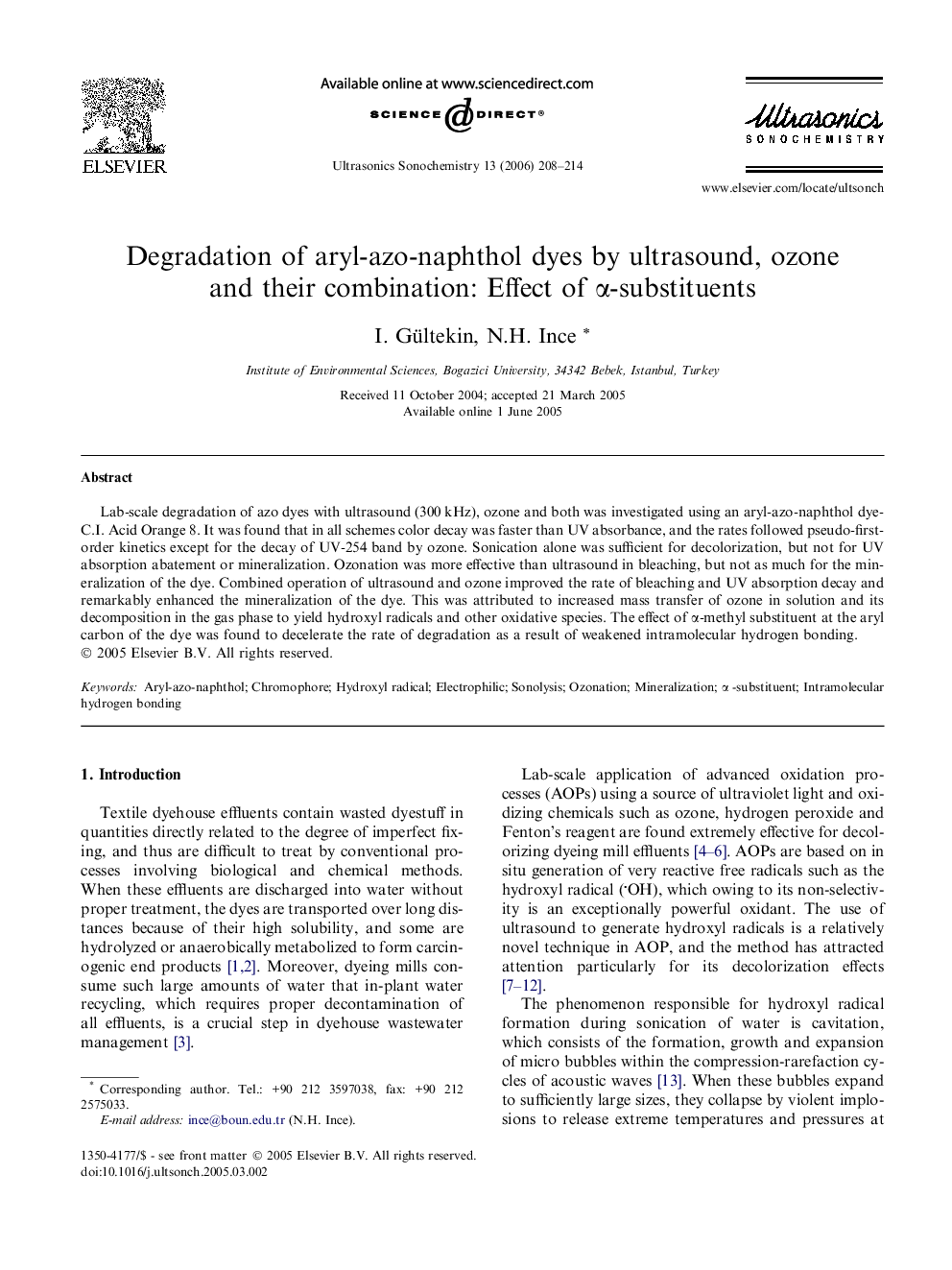| Article ID | Journal | Published Year | Pages | File Type |
|---|---|---|---|---|
| 1271476 | Ultrasonics Sonochemistry | 2006 | 7 Pages |
Lab-scale degradation of azo dyes with ultrasound (300 kHz), ozone and both was investigated using an aryl-azo-naphthol dye-C.I. Acid Orange 8. It was found that in all schemes color decay was faster than UV absorbance, and the rates followed pseudo-first-order kinetics except for the decay of UV-254 band by ozone. Sonication alone was sufficient for decolorization, but not for UV absorption abatement or mineralization. Ozonation was more effective than ultrasound in bleaching, but not as much for the mineralization of the dye. Combined operation of ultrasound and ozone improved the rate of bleaching and UV absorption decay and remarkably enhanced the mineralization of the dye. This was attributed to increased mass transfer of ozone in solution and its decomposition in the gas phase to yield hydroxyl radicals and other oxidative species. The effect of α-methyl substituent at the aryl carbon of the dye was found to decelerate the rate of degradation as a result of weakened intramolecular hydrogen bonding.
